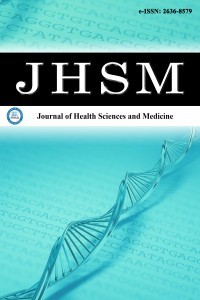1.
Thijs RD, Surges R, O’Brien TJ, Sander JW. Epilepsy in adults. <em>Lancet</em>. 2019;393(10172):689-701.
2.
Miller WR, Von Gaudecker J, Tanner A, Buelow JM. Epilepsy self-management during a pandemic: experiences of people with epilepsy. <em>Epilepsy Behavior</em>. 2020;111:107238. doi:10.1016/j.yebeh. 2020.107238
3.
Fiest KM, Sauro KM, Wiebe S, et al. Prevalence and incidence of epilepsy. <em>Neurology</em>. 2017;88(3):296-303. doi:10.1212/WNL. 0000000000003509
4.
Tomson T, Battino D, Bromley R, et al. Management of epilepsy in pregnancy: a report from the International League Against Epilepsy Task Force on Women and Pregnancy. <em>Epileptic Disorders</em>. 2019;21(6):497-517. doi:10.1684/epd.2019.1105
5.
MacDonald SC, Bateman BT, McElrath TF, Hernández-Díaz S. Mortality and morbidity during delivery hospitalization among pregnant women with epilepsy in the United States. <em>JAMA Neurol</em>. 2015;72(9):981. doi:10.1001/jamaneurol.2015.1017
6.
Benini R, Roth R, Khoja Z, Avoli M, Wintermark P. Does angiogenesis play a role in the establishment of mesial temporal lobe epilepsy?. <em>Int J Development Neurosci.</em> 2016;49:31-36. doi:10. 1016/j.ijdevneu.2016.01.001
7.
Leal B, Chaves J, Carvalho C, et al. Brain expression of inflammatory mediators in mesial temporal lobe epilepsy patients. <em>J Neuroimmunol</em>. 2017;313:82-88.
8.
Rana A, Musto AE. The role of inflammation in the development of epilepsy. <em>J Neuroinflammation</em>. 2018;15(1):144. doi:10.1186/s12974-018-1192-7
9.
Hosseini S, Mofrad AME, Mokarian P, et al. Neutrophil to lymphocyte ratio in epilepsy: a systematic review. <em>Mediators Inflammation</em>. 2022;2022(1):4973996. doi:10.1155/2022/4973996
10.
Besimoglu B, Öcal FD, Sinaci S, Atalay A, Tanaçan A, Şahin D. Effect of antiepileptic drugs on serum biochemical marker levels of first and second trimester screening tests. <em>J Obstet Gynaecol Res</em>. 2022;48(7):1607-1612. doi:10.1111/jog.15250
11.
Tuğrul Ersak D, Üçyıldız Ö, Yıldırım M, et al. Role of platelet indices in pregnant women with epilepsy. <em>Arch Epilepsy. </em>2023; 29:3. doi:10.4274/ArchEpilepsy.2023.23080
12.
Laleli Koç B, Ersak DT, Üçyıldız Ö, et al. Changes in the maternal serum inflammatory parameters of pregnant women with epilepsy. <em>Arch Epilepsy.</em> 2023;29(3). doi:10.4274/ArchEpilepsy. 2023.23100
13.
Çendek BD, Bayraktar B, Körpe B, Ustun Y, Keskin HL, Erel Ö. Ischemia-modified albumin levels in threatened abortion and missed abortion compared to healthy pregnancies. <em>J Exp Clin Med</em>. 2024;41(1):102-107.
14.
Christoforaki V, Zafeiriou Z, Daskalakis G, Katasos T, Siristatidis C. First trimester neutrophil to lymphocyte ratio (NLR) and pregnancy outcome. <em>J Obstetr Gynaecol</em>. 2020;40(1):59-64. doi:10.1080/01443615.2019.1606171
15.
Hai L, Hu ZD. The clinical utility of neutrophil to lymphocyte ratio in pregnancy related complications: a mini-review. <em>J Lab Precision Med</em>. 2020;5(0). doi:10.21037/jlpm.2019.10.03
16.
Shi X, Zhang X, Song S, et al. Correlation between inflammatory markers over time and disease severity in status epilepticus: a preliminary study. <em>Front Neurol</em>. 2024;15:1334415. doi:10.3389/fneur.2024.1334415
17.
Viale L, Allotey J, Cheong-See F, et al. Epilepsy in pregnancy and reproductive outcomes: a systematic review and meta-analysis. <em>Lancet</em>. 2015;386(10006):1845-1852. doi:10.1016/S0140-6736(15) 00045-8
18.
Hvas CL, Henriksen TB, Østergaard JR, Dam M. Epilepsy and pregnancy: effect of antiepileptic drugs and lifestyle on birthweight. <em>Int J Obstetr Gynaecol</em>. 2000;107(7):896-902. doi:10.1111/j.1471-0528.2000.tb11089.x
19.
Hiilesmaa VK, Teramo K, Granström ML, Bardy AH. Fetal head growth retardation associated with maternal antiepileptic drugs.<em> Lancet</em>. 1981;318(8239):165-167. doi:10.1016/S0140-6736 (81)90354-8
20.
Almgren M, Källén B, Lavebratt C. Population-based study of antiepileptic drug exposure <em>in utero</em>-influence on head circumference in newborns. <em>Seizure</em>. 2009;18(10):672-675. doi: 10.1016/j.seizure.2009.09.002
21.
Van Marter LJ, Pennell PB, Brown C, et al. Neonatal outcomes in the MONEAD study of pregnant women withepilepsy.<em> J Pediatr X</em>. 2021;7:100073. doi:10.1016/j.ympdx.2021.100073
22.
Borgelt L, Hart F, Bainbridge J. Epilepsy during pregnancy: focus on management strategies. <em>IJWH</em>. 2016;8:505-517. doi:10.2147/IJWH.S98973

